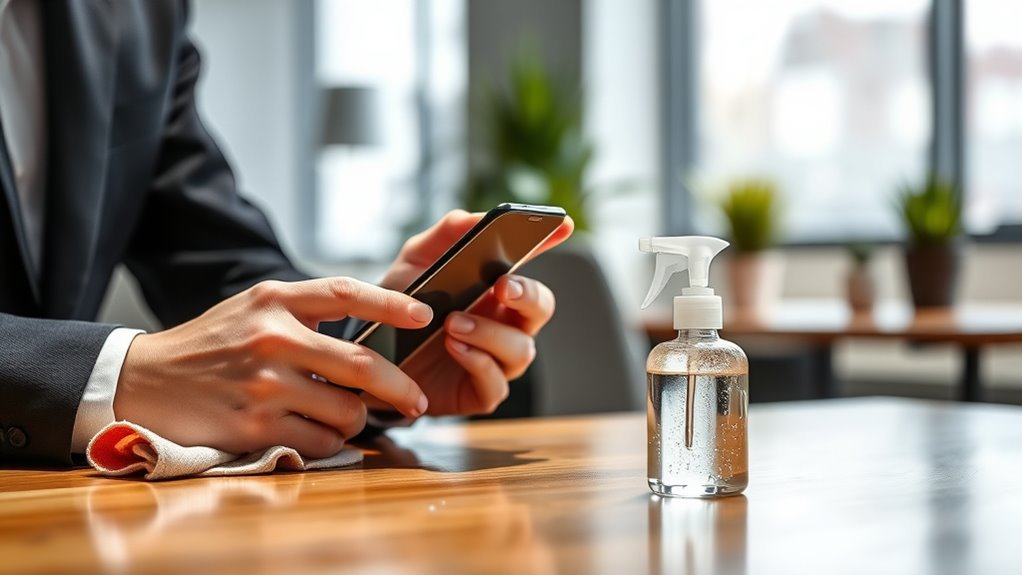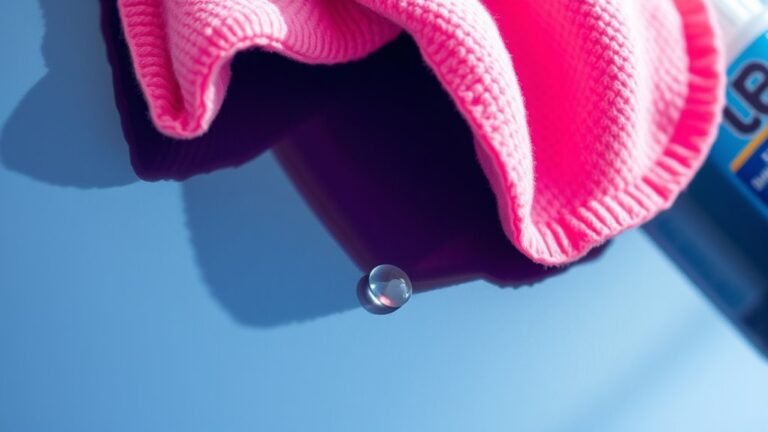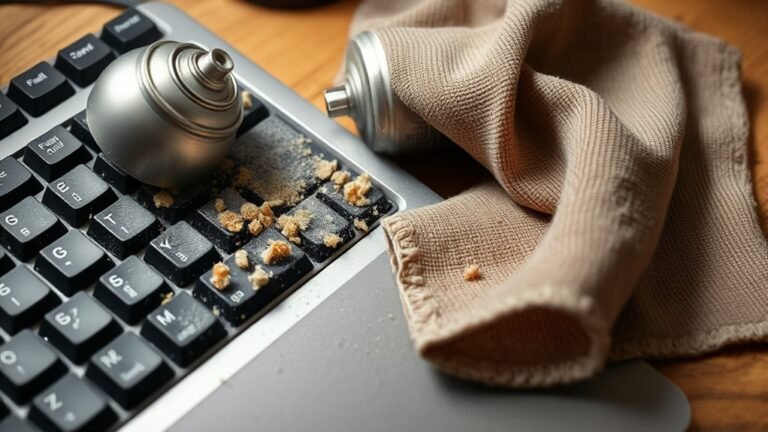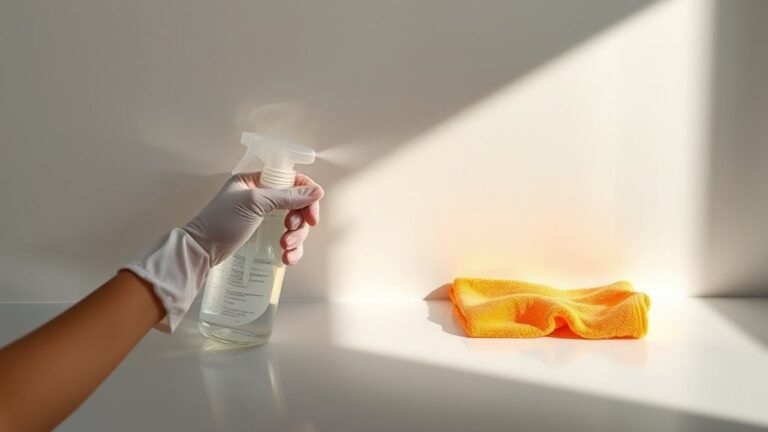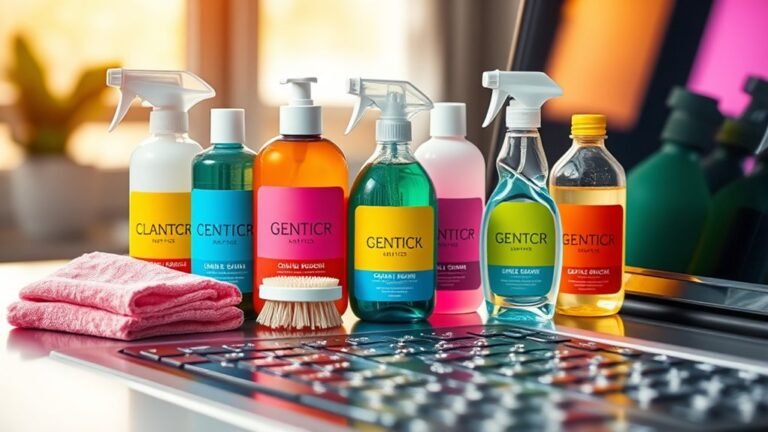How to Clean Smartphone in Office Spaces
To clean your smartphone in office spaces, first power it off and disconnect any accessories. Use a microfiber cloth dampened with 70% isopropyl alcohol to gently wipe the screen and high-touch areas without spraying liquid directly on the device. Avoid abrasive materials and be cautious around openings to prevent moisture damage. Cleaning daily helps reduce germs and maintains hygiene in shared environments. Keep your phone sanitized to support a safer workspace—and discover more techniques that guarantee peak care.
Why Regular Smartphone Cleaning Matters in the Workplace
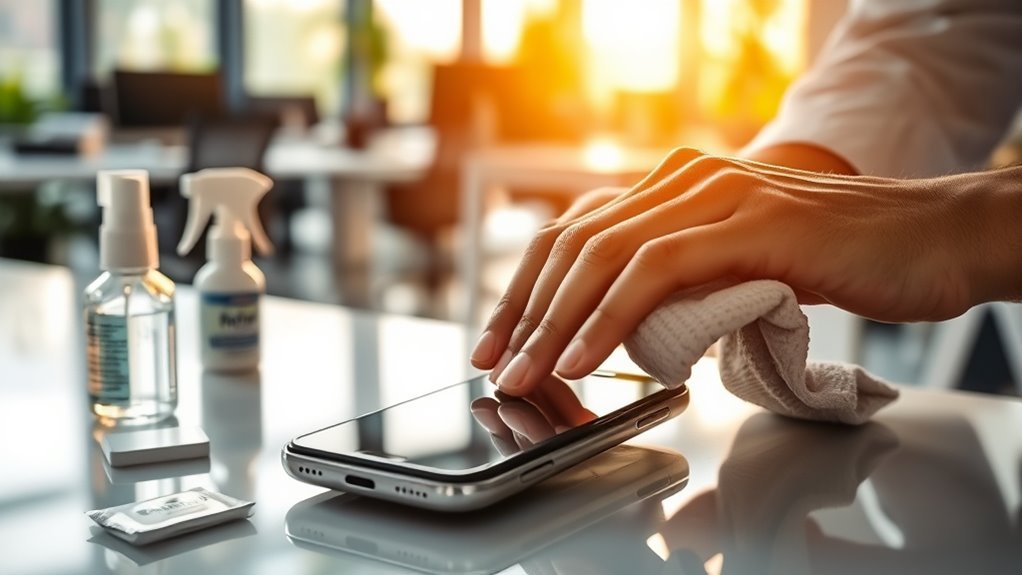
Although you might not realize it, regularly cleaning your smartphone in the workplace is crucial for maintaining hygiene and preventing the spread of germs. Your device is a hotspot for bacteria, posing health risks not only to you but to your colleagues. By keeping your phone clean, you reduce the chances of contamination and illness, fostering a healthier work environment. Furthermore, a clean device can contribute to a productivity boost. Dirt and grime can affect your phone’s responsiveness, slowing you down during important tasks. Taking a few moments to clean your phone regularly guarantees it functions at its best, helping you stay efficient and focused. Prioritizing this simple habit supports both your well-being and your professional performance.
Essential Supplies for Cleaning Your Phone at Work
Keeping your smartphone clean at work starts with having the right supplies on hand. You’ll want to gather effective cleaning tools and disinfecting wipes to guarantee thorough sanitizing without damaging your device. Here’s a simple list to keep nearby:
| Supply | Purpose |
|---|---|
| Microfiber Cloth | Removes dust and fingerprints |
| Disinfecting Wipes | Kills germs and bacteria |
| Isopropyl Alcohol | Cleans tough grime (use sparingly) |
These essentials provide freedom to clean your phone anytime, maintaining hygiene without hassle. Avoid abrasive materials or household cleaners that might harm your screen or coating. With these supplies, you’re ready to keep your smartphone spotless and safe throughout your workday.
Step-by-Step Guide to Sanitizing Your Smartphone Safely
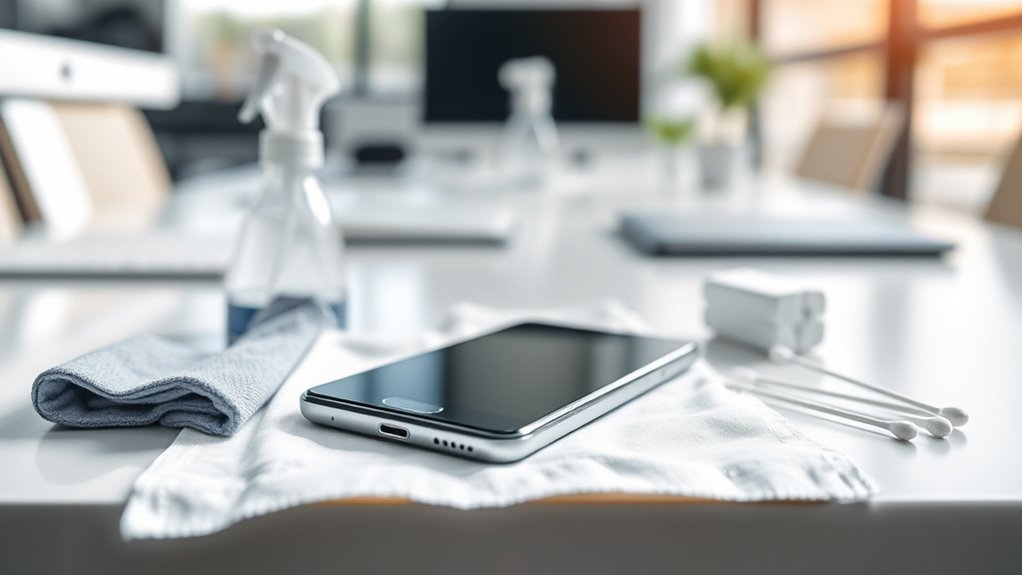
Before you start sanitizing your smartphone, make certain your hands are clean and your supplies are ready. Begin by turning off your phone and disconnecting any smartphone accessories. Use a microfiber cloth slightly dampened with a 70% isopropyl alcohol solution to gently wipe the screen, back, and sides. Avoid excess moisture to prevent damage. Pay attention to crevices and ports, using a soft-bristled brush or cotton swab if needed. Focus on high-touch areas without applying pressure. Let your phone air dry completely before reconnecting accessories or powering it back on. Following these cleaning techniques guarantees your device stays hygienic without compromising functionality, giving you the freedom to use your smartphone confidently throughout the workday.
Best Practices to Avoid Damaging Your Device While Cleaning
When cleaning your smartphone, it’s crucial to use gentle motions and avoid harsh chemicals that could damage the screen or internal components. Always power off your device and disconnect it from any chargers before starting. Use a microfiber cloth to protect the screen and prevent scratches. Avoid spraying liquids directly onto the phone; instead, lightly dampen the cloth with a suitable cleaning solution. Be cautious around openings such as speakers and charging ports to prevent moisture ingress. Stick to approved cleaning techniques that prioritize screen protection, like using alcohol-free wipes or screen-safe sprays. By following these best practices, you guarantee your device remains clean and fully functional without risking damage, giving you the freedom to maintain hygiene confidently in your office space.
How Often Should You Clean Your Smartphone in Office Settings?
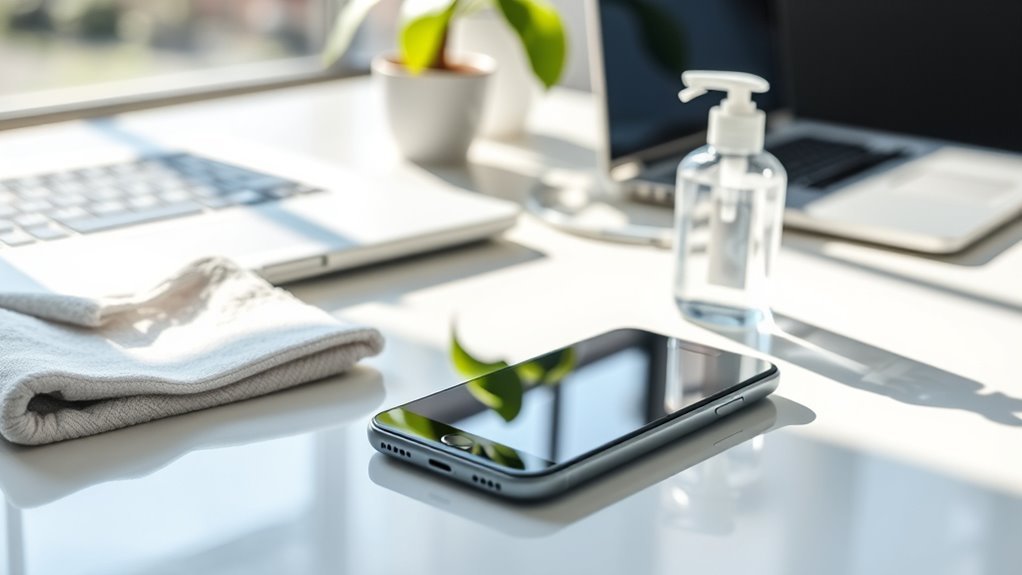
How often should you clean your smartphone in an office environment? To maintain ideal office hygiene, you should prioritize daily cleaning of your device. Your smartphone is constantly exposed to germs and bacteria, especially in shared spaces like offices. Daily cleaning reduces the risk of contamination and keeps your device safe to use throughout the workday. Incorporating a simple routine, such as wiping your phone with a disinfectant wipe at the start or end of your shift, promotes a healthier workspace. Consistency is key—regularly cleaning your phone not only protects your health but also supports overall office hygiene standards. By committing to daily cleaning, you take control of your environment and enjoy the freedom of a cleaner, safer workspace.
Tips for Maintaining a Germ-Free Workspace Around Your Phone
Keeping your workspace germ-free goes beyond just cleaning your smartphone. To maintain a healthy environment, you need to address common germ hotspots around your phone. Regularly disinfect your desk surface, keyboard, and mouse since these areas harbor bacteria that can transfer to your device. Use effective cleaning techniques like microfiber cloths with alcohol-based cleaners to avoid damaging electronics. Also, minimize clutter to reduce dust and germs accumulation. Here are three essential tips:
Disinfect your desk, keyboard, and mouse regularly to keep germs from spreading to your phone and workspace.
- Wipe down frequently touched surfaces daily, focusing on germ hotspots.
- Use screen-safe disinfecting wipes for your phone and peripherals.
- Practice good hand hygiene before and after using your phone.
Frequently Asked Questions
Can UV Phone Sanitizers Be Used Safely in Office Environments?
Think of UV sanitizers as tiny suns, zapping germs without harsh chemicals. You can definitely use them safely in office environments—they’re designed for office safety, killing bacteria and viruses on your phone quickly. Just follow the manufacturer’s instructions to avoid overexposure or damage. This method gives you freedom from sticky wipes and harmful residues, keeping your workspace clean and your device germ-free with minimal hassle.
Are Screen Protectors Effective in Reducing Germs on Smartphones?
You might wonder about screen protector effectiveness in germ reduction. While screen protectors can offer a smooth surface that’s easier to clean, they don’t inherently kill or reduce germs. Their main benefit is protecting your phone screen from scratches, but germs can still cling to the protector itself. To truly reduce germs, frequent cleaning with appropriate sanitizers is essential, regardless of whether you use a screen protector or not.
What Are the Risks of Using Alcohol Wipes on Phone Cases?
Imagine your phone case as a delicate painting—using alcohol wipes might seem like a quick fix, but it risks fading the colors. While alcohol efficacy in killing germs is proven, it can degrade certain case materials like leather or rubber, causing cracks or discoloration. To keep your phone’s look fresh while enjoying freedom from germs, choose wipes suitable for your case type or opt for gentler cleaning methods that protect both hygiene and aesthetics.
Can Smartphone Cleaning Affect Warranty Coverage?
You should check your smartphone’s warranty policies before cleaning it, as certain cleaning methods might void coverage. Using harsh chemicals or abrasive materials can damage your device, leading manufacturers to refuse warranty claims. To keep your freedom intact, stick to recommended cleaning methods like gentle wipes or microfiber cloths. This way, you maintain your device’s protection without risking warranty invalidation from improper cleaning practices.
Is It Safe to Share Charging Stations Without Cleaning Phones Afterward?
Sharing charging stations without cleaning your phone afterward is like leaving a door wide open for germs to roam freely. Charging station hygiene is essential because these common areas can harbor bacteria and viruses. Practicing good smartphone sharing etiquette means wiping your device regularly to protect yourself and others. By doing so, you maintain personal freedom while minimizing health risks in shared environments. Don’t overlook this simple step for your well-being.
